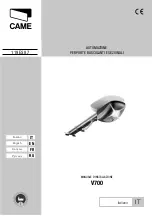
Service
- 39 -
05.22
909.4609.9-00
After each use
Â
Clean all accessories with water.
For short interruptions of work < 1 week, it is sufficient
to pack the brush with a protective cap. This protects the
brush from dust or other dirt.
Loosen the connection between the brush and the handle
only in order to replace the brush. Any loosening bears the
risk of electrolyte carry-over into the thread and onto the
contact surfaces, which can lead to their destruction.
Â
Rinse the carbon fibre brush thoroughly under running
water if you are not going to use it for a long time.
Â
If necessary, wipe the unit casing with a slightly damp
cloth.
Â
Neutralise the diluted electrolyte residues.
Â
Clean the workplace thoroughly with plenty of water.
–
Electrolyte residues can cause burns to the skin or
clothing.
–
Electrolyte residues can cause damage to surfaces.
Â
Wipe the cables and the earth clamp damp with water and
a cloth.
Â
Dispose of the neutralised electrolyte residues properly.
Â
Remove all electrolyte residues around the workplace, the
work table and the floor with plenty of water.
Â
Add commercial household cleaner or soap to the clean-
ing water.
Before each initial set-up
–
Security check as in chapter “6 Possible sources of
danger and protective measures” on Page 26.
–
Check the handle and brush for dirt and wear, clean or
replace if necessary
–
Check earth terminals for oxidation, clean if necessary
–
Check electrolyte, if used up --> replace
Weekly
–
Security check as in chapter “6 Possible sources of
danger and protective measures” on Page 26.
–
Clean earth terminals
–
Clean power unit
Every 6 months
–
Maintenance of the unit
Annually
–
Repeat tests according to VDE 0701-0702
27
Disposal
27.1
Disposal of contaminated electrolytes
Never dispose of contaminated electrolytes into the sew-
age system or environment in an undiluted manner.
Heavy metal residues from oxidised welds and metal sur-
faces may be dissolved in the contaminated electrolytes.
These residues must be filtered and disposed of properly.
Dilute electrolytes with plenty of water, lime or a neutralis-
ing agent to a PH value greater than 5 before disposing of
them.
Only for EU countries.
Do not dispose of electric tools together with
household waste material!
In observance of European Directive 2012/19/EU on waste,
electrical and electronic equipment and its implementation in
accordance with national law, electric tools that have reached
the end of their service life must be collected separately and
returned to an environmentally compatible recycling facility.
28
Service
Lorch Schweisstechnik GmbH
Im Anwänder 24 - 26
71549 Auenwald
Germany
Tel.
+49 7191 503-0
Fax
+49 7191 503-199
Lorch Information Support Wizard:
https://my.lorch.eu
Here you can obtain circuit diagrams and spare parts lists for
your product.






































